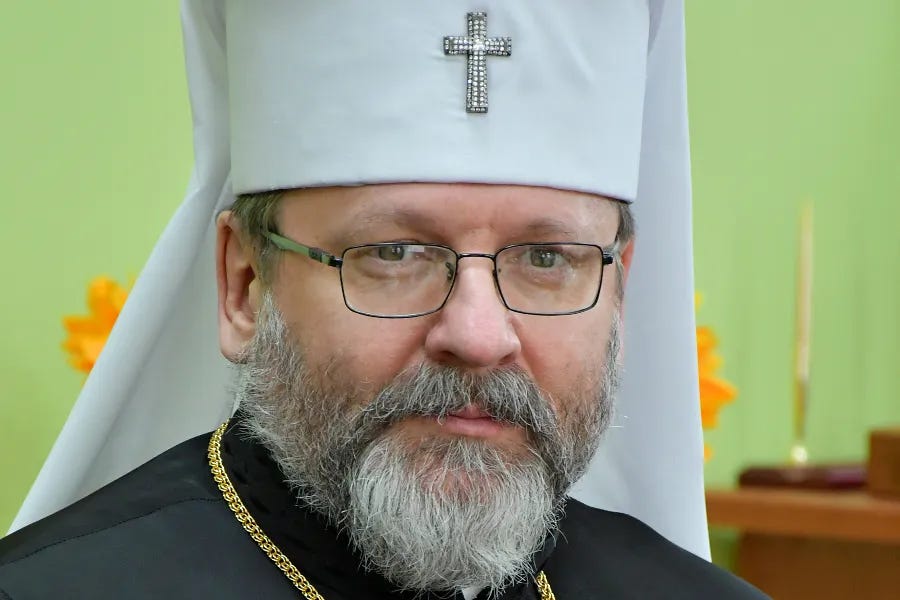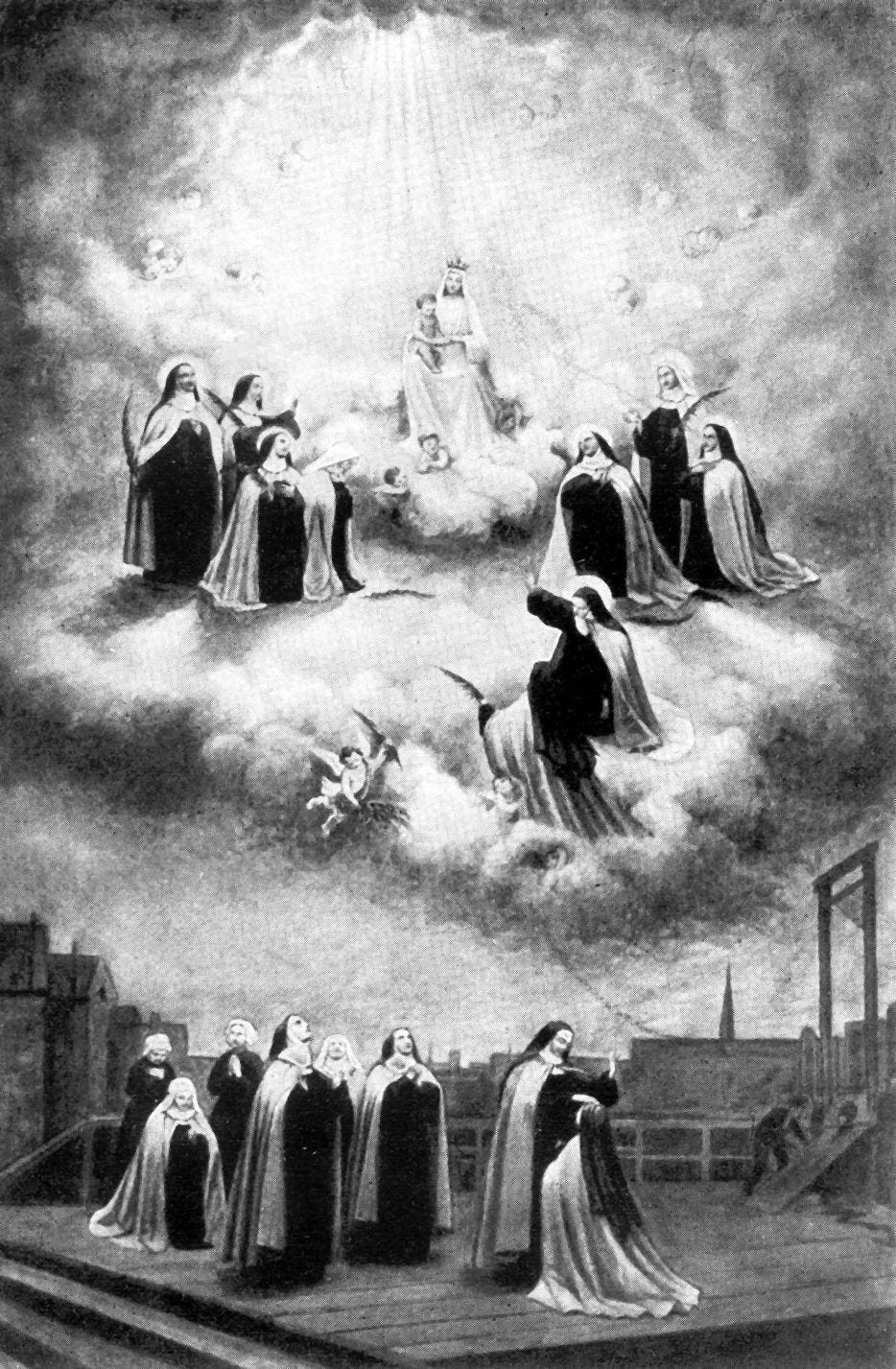Happy Friday friends,
We landed on the Moon last night, so let’s all just take a second and be happy about that.
Ok, it wasn’t people we put there, it was the unmanned Nova-C lunar lander Odysseus, which touched down at 18:23 ET.
It’s true that unmanned landings aren’t that rare — Japan and India both managed it last year. But it’s the first time Americans have managed a real landing (vs. a hard impact) since the 1970s. I say “Americans” rather than “America” because Intuitive Machines’ IM-1 mission was the first private sector lunar landing ever, and blasted off using a SpaceX Falcon-9.
There’s a lot to be jazzed about with this.
It’s easy to shrug this stuff off and say yeah, well, guys in polyester bell bottoms with horseshoe mustaches did this 50 years ago, so how hard can it be for us post-millennial geniuses with our iPhones and our AI?
The answer is “hard,” it’s very hard. And we had mostly forgotten how to do it since the last time we tried.
I’m not an applied mathematician, or an astrophysicist, or a propulsion specialist, but I do know a few people who are.
And from what little they are able to explain to me before I start bleeding from my ears trying to follow along, the high level math it takes to successfully launch something to the Moon, then gracefully luff up and land the sucker, is closer to scoring music than running an equation.
If you don’t do it for 50 some years, you lose the living memory, the expertise, and the human genius you need to get it done.
So, yeah, it’s a big deal we did it again.
Looking ahead, this is a shot in the arm for NASA’s somewhat stuttering Artemis program to get Yankee boots back on the big green cheese, and a proper space station orbiting it.
And getting back to the Moon is the first step in getting to Mars. That’s what this is really all about.
If “Mars or Bust” sounds like a silly, space camp nerd’s plan to set fire to so much money it would take a rocket scientist to calculate, I understand the hesitancy.
But I’d also ask you to remember, if you’re old enough, what it meant for us as a species when we put Apollo XI up there back in ‘69, what it meant to a nation socially and politically at war with itself, and to a world constantly walking the line of self-annihilation, for every man, woman, and child to collectively hold their breath in wonder at what we can achieve.
And if you aren’t old enough to remember that far back, neither am I. Don’t you think we owe ourselves one minute like that in our lifetime?
Now, here’s the news.
The News
The bishops of Germany concluded their plenary meeting this week, with conference president Bishop Georg Bätzing insisting that the Vatican’s concerns about their proposed “synodal committee” had been heard.
The bishops “discussed intensively and in detail what the letter means,” Bätzing said, apparently struggling to unpack Rome’s use of complicated terms like “invalid” and “legal consequences.”
But, while the bishops complied with the Vatican’s instruction not to vote to approve the committee’s statutes this week, it doesn’t mean they are walking away from the project. Rather, they plan to retire to their corner to consult with their partner group, the Central Committee of German Catholics, to discuss their next move ahead of June, when the committee is meant to come online.
Read all about what happened, and what could happen next, here.
—
Local police in Western Australia arrested Bishop Christopher Saunders, the former leader of the Diocese of Broome, at his home on Wednesday.
The bishop, who retired for “health reasons” in 2021, is charged with 14 different counts of rape and sexual abuse. The police arrested the bishop following a raid on his former residence in the diocese last month.
The police previously investigated the bishop, but closed their files for lack of evidence that same year, but reopened the case after being passed a copy of a canonical investigation into the bishop last year.
Get up to speed with the case here.
—
No other country in the world has received as many new bishops as India in the first two months of this year.
Superficially, there doesn’t seem to be a problem: Eight vacancies out of 132 dioceses (6%) doesn’t seem like an abnormally high figure. But nine more are set to fall vacant by the end of the year, including some of the largest archdioceses on the subcontinent, and the appointment process isn’t exactly without its political pitfalls.
The empty seats aren’t just administrative inconveniences either. With attacks and harassment of Christians on the rise in the country, the bishops are often the only public figures speaking out in defense of their people.
—
The Church in the Netherlands has its issues. Mass attendance is under 2%, the vocational situation is dire, and hundreds of churches and parishes are being consolidated up and down the country.
But Bishop Jan Hendriks of Haarlem-Amsterdam sees good things.
“It is not about us adapting to the times, but us adapting to Jesus Christ,” he said. “There is no other solution than to remain faithful to the message of the Gospel and proclaim it with strong conviction and to be clear.”
“You see that the young people who convert or return to the Catholic Church, come because of these strong convictions, not because of a watered down message.”
“We have to accept that we are a sign of contradiction. We should not shy away from that.”
But it’s not just about doctrinal clarity, he said. Community is key.
“Especially for young people, it is very important to live in community, to have community with each other, to have experiences of faith. One of the focus points of our diocese is the apostolate for young people.”
“What I always notice is that most of our seminarians have a background in a community or institution of the Church — like the Neocatechumenal Way or Opus Dei, or perhaps a parish that had a very lively community with young people.
“I feel like I’m repeating myself, but I cannot stress enough the importance of community.”
—
On Tuesday, lawyers for Libero Milone, the former Vatican auditor, filed their appeal of the Vatican City court’s decision against his wrongful dismissal lawsuit last month.
The crux of the case is this: no one really disputes that Vatican City gendarmes and the then-sostituto of the Secretariat of State, Pillar reader and convicted criminal Cardinal Angelo Becciu, conspired to force Milone from office under threat of prosecution.
And it’s a matter of public record that Becciu has admitted (boasted, really) to stymieing Milone’s work as auditor and blocking his investigation into exactly the sort of shenanigans that got him sentenced to more than five years in jail.
But, so far, Vatican City judges have not been persuaded that any of this is institutionally the Vatican’s problem, or that they owe Milone so much as an apology, let alone damages, for what was done to him.
If Becciu and the cops conspired to force him out, they did so abusing their offices and that’s a them problem, not an us problem, lawyers for the Secretariat of State have successfully argued thus far.
The problem is, Becciu has also insisted he was acting legitimately in his official capacity, but roped the pope into the picture at the same time.
As I wrote, this all leaves Milone stuck in a legal Catch-22, in which every argument proving the injustice of what was done to him is turned to deny him legal redress. It highlights a potentially systemic flaw in the Vatican City’s justice system, one for which I see no obvious correction.
—
Cardinal Timothy Dolan weighed in this week on the scandal of trans activist Cecilia Gentili’s funeral in St. Patrick’s cathedral.
“[People] are sick of hearing about it, aren’t they?” the cardinal said on his weekly radio show.
“I don’t [know], what do you do?” the cardinal concluded.
As JD points out, after speaking to senior clergy in NYC, people do have some suggestions, if the cardinal is interested in hearing them.
But Dolan seems to have form on this kind of thing.
To hear his own clergy tell it, the cardinal is not a man they look to for action in a jam like this — describing the baseball-loving-cardinal’s game day leadership as more comfortable tossing a ceremonial first pitch then actually stepping into the box to face a fast ball.
When a cultural hot button crosses the threshold of St. Patrick’s, literally or metaphorically, some priests say that Dolan seems to shirk from the tough questions.
Five years forward, five steps back
Wednesday of this week marked the five-year anniversary of Pope Francis’ global summit on the abuse crisis, held in Rome in 2019.
It was that summit which led to the promulgation of Vos estis lux mundi, the papal motu proprio introducing new laws and procedures to punish abuse of minors and vulnerable adults, and negligence by bishops and religious superiors.
It was meant to signal a new era of “zero tolerance” in the Church, with participants vowing “never again” amid mounting global scandals of which Theodore McCarrick was merely the most well-known.
Two of Rupnik’s victims also marked the occasion by holding a press conference to describe their abuse, and the “deafening silence” and “rubber wall” from Church authorities in the face of their claims.
It’s hard to argue with their characterization. That Rupnik only now faces the prospect of canonical justice is only due to immense public outcry from Catholics worldwide, and a public shaming of the Vatican’s handling of the case by the Pontifical Commission for the Protection of Minors last year.
The depths of Vatican dysfunction, or indifference, to Rupnik’s crimes has been laid bare over the last two years. Even setting aside the still-unexplained decision not to waive the statute of limitations on his crimes for several years, it is clear the en vogue artist benefitted from efforts to protect him.
In 2020 he was tried, convicted, and excommunicated for crimes against the sacrament of confession and then so quickly rehabilitated that no one ever knew — he was allowed even to retain his public appointments as an expert consulter to at least three Vatican dicasteries during the process.
As recently as last year, the pope’s own diocesan curia in Rome was issuing statements backing Rupnik, even as the Jesuits belatedly moved to expel — though not laicize — the priest.
To this day, the Vatican’s Dicastery for Communications seems to default to featuring Rupnik’s artwork on its devotional and promotional materials.
If Rupnik’s case were a solitary outlier within five years of concerted progress, it would still rightly be a source of shame for the Church. Instead, his case is closer to typical for a Vatican still mired in personal favoritism and a culture of clerical deference.
No number of new policies or commitment to transparency was enough to convince the Vatican to hand over its case files to Argentine authorities in the trial of Bishop Oscar Zanchetta, who was convicted of sexually abusing seminarians in 2022 but had been shielded from justice for years after Pope Francis allowed him to resign his local diocese for “health reasons” and gave him a make-work Vatican job.
Speaking of “health reasons,” they also supposedly triggered the resignation of Bishop Christopher Saunders form the Diocese of Broome, Australia, in 2021 — despite Saunders having spent a year “stepping back” from governing the diocese over allegations of serial sexual abuse of young Aboriginal men.
In another illustrative commemoration of Wednesday’s anniversary, local police arrested the retired bishop on Feb. 21, charging him with 19 counts of rape and sexual abuse. They made the bust on the strength of a leaked copy of the Church’s own Vos estis investigation into the bishop — its contents were enough for the Australian police to act, though the file has been stuck in Vatican limbo for some time now.
Meanwhile, as of last year, Saunders was still listed as the legally “responsible person” for nine Catholic charities in his former diocese, several of which are affiliated with local parishes.
In the United States, the first bishop to face a full Vos estis investigation, Bishop Michael Hoeppner of Crookston, was also allowed to resign, rather than face a formal canonical trial and sanction, after he pressured a victim to recant his abuse claim.
While he wasn’t able to cite “health reasons” for his premature retirement, he did throw himself a Mass of Thanksgiving for “the blessings that Almighty God has bestowed upon us” through his time in charge, which he called “a real treat.”
Meanwhile, the former president of the French bishops’ conference, Cardinal Jean-Pierre Ricard, remains a cardinal in good standing and able to vote in a future conclave, despite having admitted in 2022 to abusing a 14-year-old girl.
Rupnik, Zanchetta, Saunders, Hoeppner, and Ricard make a revolting, though far from exhaustive, summary of what “transparency and accountability” actually mean in the post-Vos estis Church.
For all the motu proprios, vademecums, reports, policies, and clarifications, it is clear there has been virtually zero substantive change in operating mindset at the top of the Holy See.
Indeed, five years on and five steps back, the enduring lesson of 2019 and the McCarrick saga seems to be that public outcry and forensic journalistic scrutiny remain the only real or reliable mechanisms of accountability.
After five years on a reforming road to nowhere, this is where we’ve arrived.
It’s gotta be the shoes?
This week I was repeatedly shown, then asked if I’d seen, a clip of EWTN’s flagship “news” personality Raymond Arroyo guesting on Fox News to discuss Donald Trump’s recent offering of $400 gold colored branded sneakers with noted pro-abortion activist Tomi Lahren (that’s a real name).
Arroyo confidently predicted the shiny kicks will lead to a bump in Black Americans voting for Trump — and this is an actual quote — “because they love sneakers, they’re into sneakers. This is a big deal, certainly in the inner city.”
“Trump understands culture like no politician I’ve ever seen,” the chat show host enthused.
Perhaps unsurprisingly, a great many people found Arroyo’s riff rather racist. For its part, EWTN has not responded to our request for comment on the matter.
You can watch for yourself.
Dressing the part
Speaking of men’s dress, a friend of mine messaged me last night looking for ideas.
He’s a college chaplain and he’s planning on giving the local lads a chat about the theology of dressing well. He asked if I had any suggestions for a theme or content. I made what modest suggestions I could, off the top of my head, but I suspect his talk will easily surpass my input.
University aged males, in my experience, tend to dress one of two ways, either hyper casually at all times, or over formally. I was no exception. And I think learning to dress properly is a tricky business, it’s part of the process of growing into adulthood and there can be growing pains.
I had a particular navy and sky blue striped suit in my twenties which I thought was the absolute bleeding edge, though in reality I looked like I had a bit part in Guys and Dolls.
Clothes are all about perception, how we see ourselves and how we want others to see us. Even if we slob about in sweats for weeks on end, as some people did during covid, we’re not communicating any less, just more viscerally.
We want to be honest about who we are, with ourselves and everyone else, so I’m not one for hard and fast rules about what you “must” or “never” wear. But we are living in a society, and we should, I think, at least dress in a way which shows some dignity of purpose in whatever we are up to. Flout the rules if you like, but you have to know them first to do it with any style.
After some early mistakes, I was lucky as a young man to fall into the kind of company (personal and professional) who could give me a good steer on basic sartorial norms, many of which I have to stop myself from imparting in the street to misguided young professionals I see out and about in DC.
When I was younger, I made some faux pas, to be sure. But the kids today are something else. Trousers tailored like they’re in the middle of an adolescent growth spurt, and striped ties paired with plaid shirts so their upper halves look like one of those 3D hidden-image puzzles you used to get in magazines in dentists’ offices.
And don’t get me started on all the tan shoes with dark suits.
Now, I’m aware this is all slightly cliche, a middle aged man chuntering away about the kids today with their crazy clothes and silly haircuts (they’re growing actually, literal, mullets — what the hell is going on??). But at least I’m reasonably self aware about it.
And I’m a big enough man, metaphorically and increasingly literally speaking, to recognize that since I turned 40 my own wardrobe has been changing in ways my 30 year old self would have ridiculed without mercy.
Corduroy has spread like a mossy blight across the jacket rail, and I unironically expounded on the joys of a good trouser press to JD the other week. Sometime in the last year or two I bought a pair tasseled loafers.
I still have my fashionable edge though, apparently. For Christmas I bought myself what I thought were a very natty pair of checked trousers, only to hear last weekend that, after I wore them out to lunch with a doyen of Catholic Washington, he’d been asking around after my sanity and telling people I turned up in pajamas.
But I have found I am dressing more comfortably these days. I don’t mean in the sense of “athleisure wear” — God forbid — but in the sense that I think less about it. I suppose, or I like to think at least, that this is a good and healthy sign.
When we first started The Pillar, I’d roll into the spare room and switch on my laptop in a jacket and tie. Not that there was anyone to see me, but out of a kind of inner, panicked, insistence that I still had a real job. I don’t do that anymore, though there’s still plenty to panic about. We’re having a murderous first quarter for subscriber turnover, which isn’t doing anything for my insomnia.
And when our daughter was born, I found myself leaning a bit hard into dressing down, or younger, I think in a bid to convince the infant that though her dad wasn’t in his twenties he wasn’t completely over the hill. I don’t do that anymore, either.
None of this was by conscious choice. It just kind of happened. And, I think, it happened because I’ve let go a little of the roiling nerouses which have fueled most of my adult life thus far.
If there’s one thing I have learned over the last three years, it’s that all is providence. Starting a business in a hurry and becoming a dad out of the blue will teach you that.
If that’s started showing in a growing preference for double pleats and natural shoulders, well, it might not be the most coherent cause and effect in the world, but it is honest.
See you next week,
Ed. Condon
Editor
The Pillar






